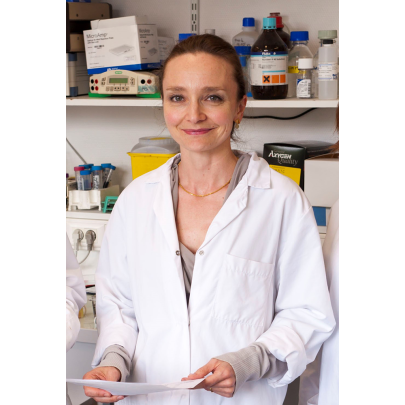Céline ColnotInstitut Mondor de recherche biomédicale (IMRB) - Inserm / Université Paris Est Créteil / UPEC
Mes recherches
I am currently a Director of Research, DR2 INSERM, at Mondor Institute for Biomedical Research, Créteil. I completed my PhD in Paris in 1998 and my postdoctoral training at University of California, San Francisco where I became Assistant Professor until 2010. My research concentrates on the biology of skeletal stem cells that are the basis for the high regenerative capacities of skeletal tissues and that are potentially deficient in various musculoskeletal diseases and disorders. I received continuous funding since 2005 from NIH, European Marie Curie Program and the French National Research Agency. The projects of my research team aim to elucidate the mechanisms of stem cell activation in their complex tissue environment in development, disease and repair employing genetic mouse models, genomics and cellular approaches. We focus on the periosteum, the tissue at the outer surface of bone and skeletal muscle adjacent to bone, that also plays essential roles in bone regeneration. The ATIP-AVENIR funding was key for us to accomplish the characterization skeletal stem cells within periosteum. These results are now the bases for several other projects further exploring periosteum functions in bone repair and its interactions with skeletal muscle, the vasculature and the nervous system.
Mon projet ATIP-Avenir
Origins and Functions of Skeletal Stem Cells in Bone Repair
The ability to repair itself is an important function of adult bone and is dependent on the proliferation and differentiation of skeletal stem/progenitor cells. It is believed that these stem/progenitor cells may come from a variety of endogenous sources, yet their exact origins and their contribution to bone healing are not clear. Iliac crest bone grafts and other bone allografts are used clinically to treat non-unions and other bone diseases, but the fate of cells and tissues once transplanted into the fracture site is not known. We hypothesized that bone repair relies primarily on the recruitment of local sources of skeletal stem cells that originate from common mesenchymal precursors in the embryo but differ by their cellular and molecular responses to various signals in the fracture environment. In Specific aim 1, we determined the mesenchymal origins of skeletal stem cells within periosteum, bone marrow and skeletal muscle for bone repair. In Specific Aim 2, we compared the contribution of local versus systemic sources of skeletal stem cells. In Specific Aim 3, we assessed the molecular regulation of skeletal cell fate decisions within bone marrow and periosteum during fracture healing using microarray and RNAseq approaches.
